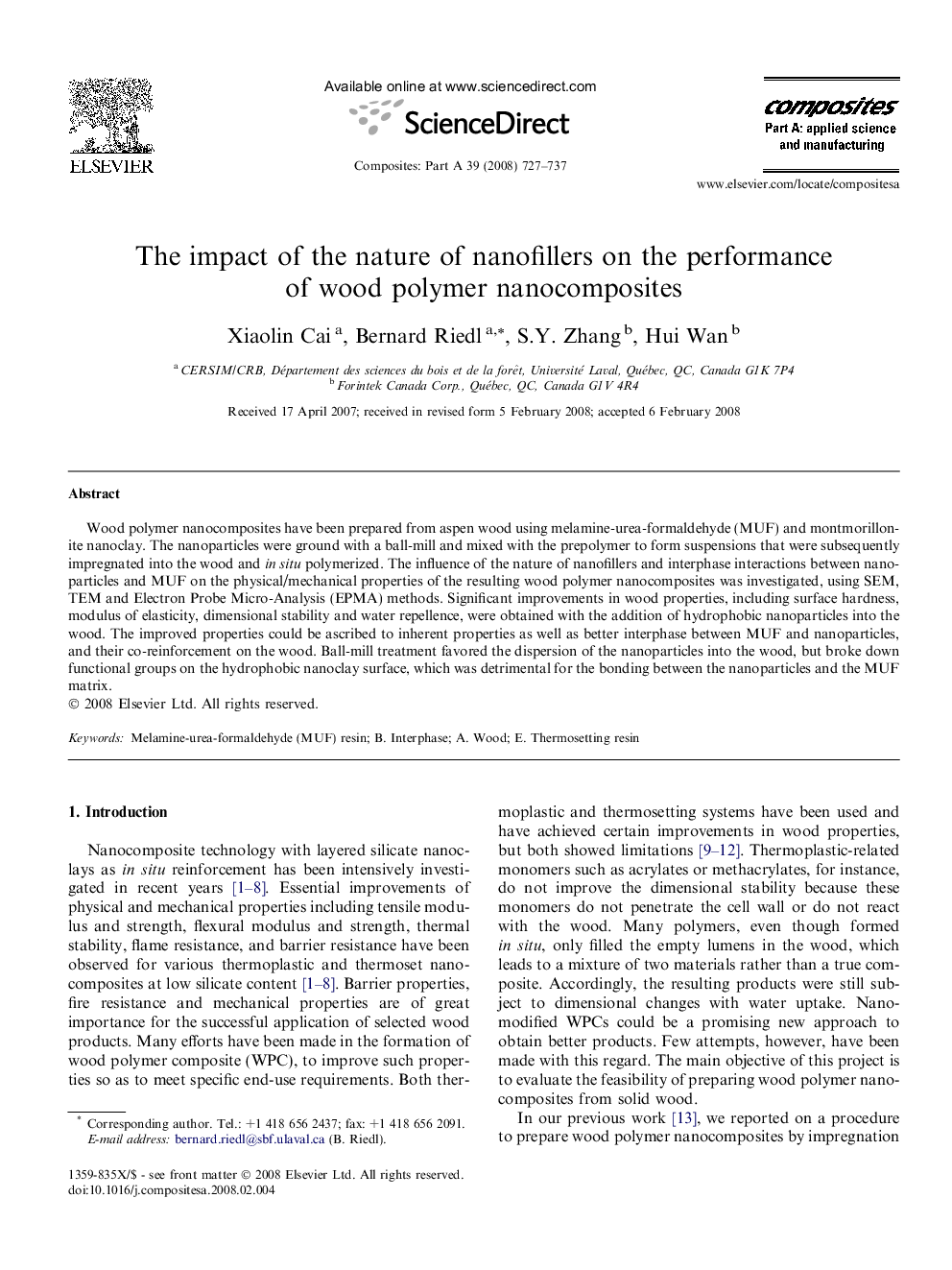| Article ID | Journal | Published Year | Pages | File Type |
|---|---|---|---|---|
| 1467736 | Composites Part A: Applied Science and Manufacturing | 2008 | 11 Pages |
Wood polymer nanocomposites have been prepared from aspen wood using melamine-urea-formaldehyde (MUF) and montmorillonite nanoclay. The nanoparticles were ground with a ball-mill and mixed with the prepolymer to form suspensions that were subsequently impregnated into the wood and in situ polymerized. The influence of the nature of nanofillers and interphase interactions between nanoparticles and MUF on the physical/mechanical properties of the resulting wood polymer nanocomposites was investigated, using SEM, TEM and Electron Probe Micro-Analysis (EPMA) methods. Significant improvements in wood properties, including surface hardness, modulus of elasticity, dimensional stability and water repellence, were obtained with the addition of hydrophobic nanoparticles into the wood. The improved properties could be ascribed to inherent properties as well as better interphase between MUF and nanoparticles, and their co-reinforcement on the wood. Ball-mill treatment favored the dispersion of the nanoparticles into the wood, but broke down functional groups on the hydrophobic nanoclay surface, which was detrimental for the bonding between the nanoparticles and the MUF matrix.
